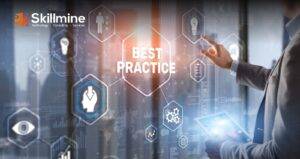According to the Polaris Market Research Report 2021, the global security operations center (SOC) market size was valued at USD 34.73 billion in 2020 and is expected to grow at a CAGR of 11.9% in the forecasted period 2021-28. The demand for the centers has risen dramatically due to the increase in the need to monitor and assess business security.
A Security Operations Centre, or SOC, is a centralized collection of people, procedures, and technology that works to defend an organization’s systems and networks against cyber-attacks by continuously monitoring, detecting, preventing, and analyzing them. All system activity is analyzed by SOCs. They can immediately identify and respond to any danger or attack by using a set of procedures, tools, and technological solutions.
Organizations benefit from SOCs in a variety of ways. Here’s how your business can benefit from SOC services:
· Continuous monitoring equals continuous protection – Potential threats are detected in real-time and more effectively with centralized and continuous SOC monitoring.
· Improved incident response – Continuous monitoring reduces the time between detection and reaction, allowing for near-instantaneous incident response in some cases.
· Identify threats – SOCs give a comprehensive picture of an organization’s complete network and infrastructure, as well as any possible vulnerabilities that may arise from sections of the attack surface that aren’t routinely monitored.
· Knowing what’s important – By feeding threat intelligence data into their security tools, SOCs can differentiate between real and not-so-real threats, and based on that, prioritize strategy and response.
· Easier incident investigation – Once an event happens, owing to the daily visibility into security data that a SOC provides, an inquiry may be conducted quickly.
· Reduced costs – Hiring a team of professionals is more cost-effective in the long term, providing you complete control over your systems and networks. This will reduce the severity of data breaches as well as the expenses associated with them.
Security operations centers can become overburdened. With so many security technologies producing warnings, the majority of which are false positives, analysts might waste time looking for spurious threats while ignoring actual ones. This situation is completely plausible, and it’s one of the SOC-related issues you may anticipate in the future, therefore it’s critical to follow best practices for running a security operations center that will keep your business ready for threats:
· Automation: Automating the SOC services would reduce the number of warnings analysts must handle, allowing them to investigate more genuine threats and security events. Instead of sifting through false positives, they may devote more effort to examining true problems.
· Threat intelligence: Threat intelligence data must be always kept current and up to date since it directly supports incident response operations. That information is gathered both internally (event logs, alarms, and incident response reports) and externally (threat intelligence feeds, news feeds, and other sources).
· Strategy: For your SOC, it’s critical to have a well-defined strategy. To keep your business safe, you’ll need to know what is to be guarded, what sort of SOC you’ll need, how to analyze your data, and more.
The bottom line is that every firm attempts to protect its infrastructure against current threats and reduce the chance of data breaches—but security structures, tactics, and entities are not ‘one size fits all. SOCs with a hybrid architecture, which supports small and medium-sized organizations, were once thought to be only suited for large organizations and enterprises. This notion has been disproved time and time again by the effectiveness of SOCs with a hybrid architecture, which supports small and medium-sized organizations.
Data platform Statista suggests that in 2021, the total addressable market (TAM) for security operations center (SOC) is forecast to amount to 30 billion U.S. dollars. A need for machine learning (ML) analytics and automation as well as an increasing need to monitor enterprise attacks is what would drive growth in this market.
Looking for expert technology consulting services? Contact us today.



